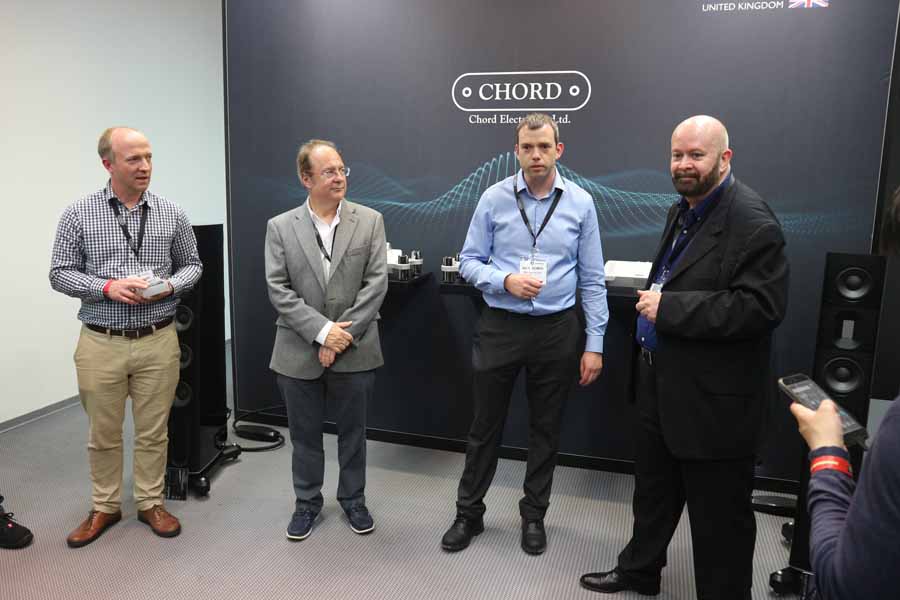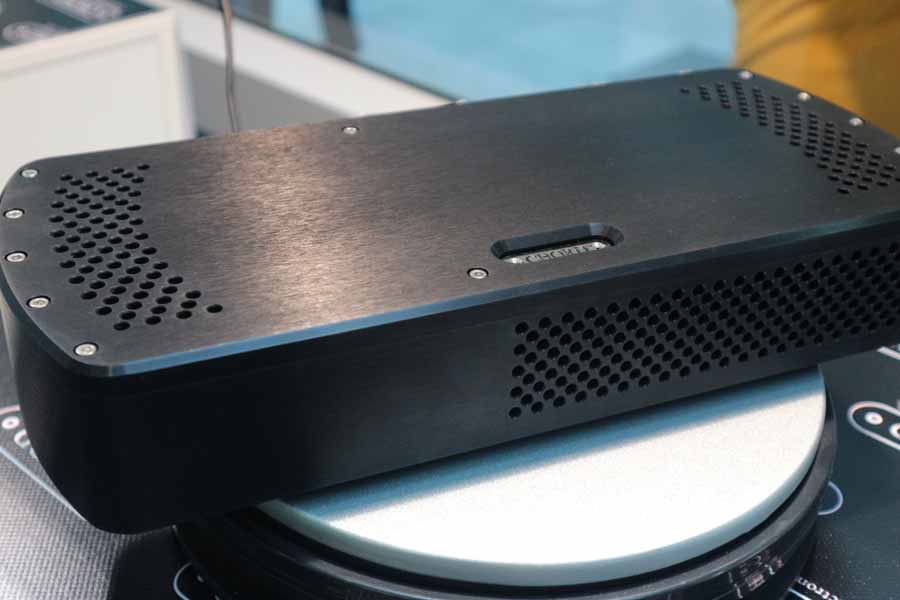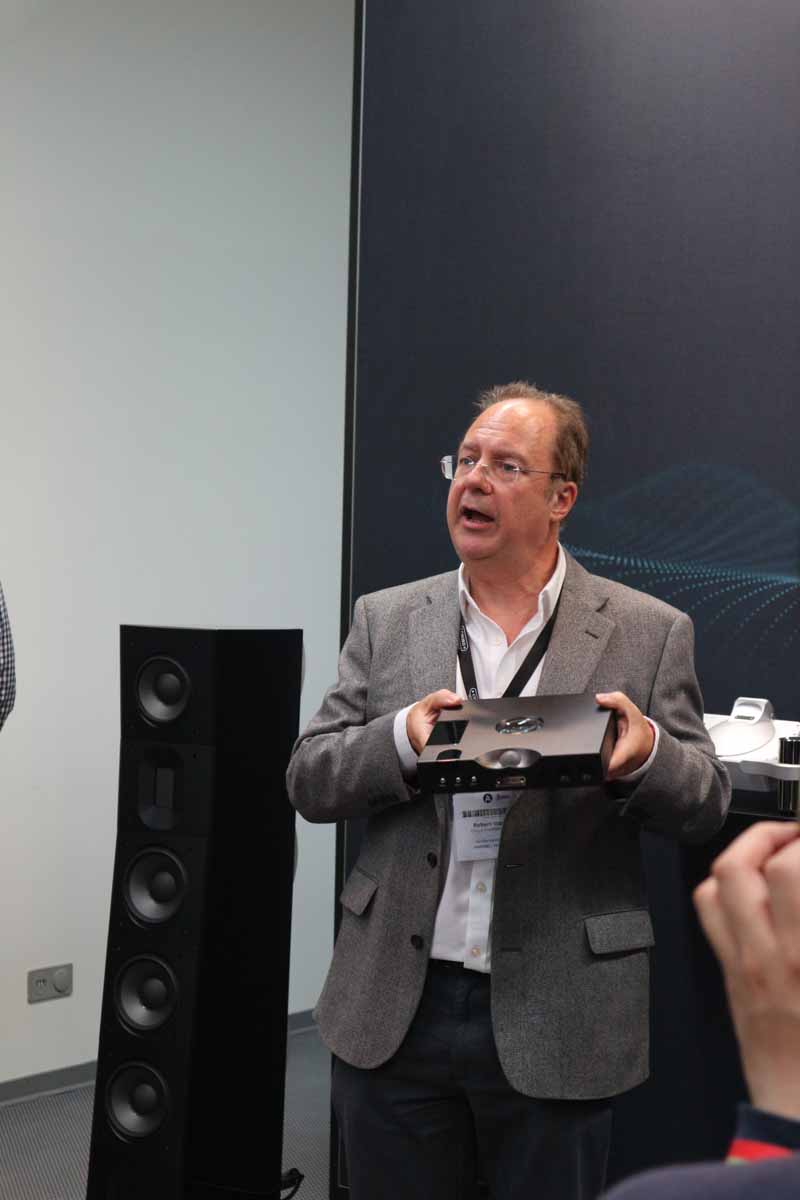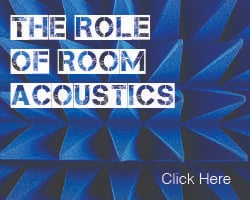 Chord Electronics certainly had the world’s Hifi Press beating a path to their door at High End Munich this year. Their room was so busy that some had to wait outside, luckily Hifi Pig was in there for a first glimpse of their new products. The full team were there and as always it was a pleasure to see them and great to see the iconic British brand in such high demand at the world’s major international Hifi Show.
Chord Electronics certainly had the world’s Hifi Press beating a path to their door at High End Munich this year. Their room was so busy that some had to wait outside, luckily Hifi Pig was in there for a first glimpse of their new products. The full team were there and as always it was a pleasure to see them and great to see the iconic British brand in such high demand at the world’s major international Hifi Show.
Chord chose High End 2018 to unveil a brand new analogue amplifier topology design, the company’s first for nearly 30 years. The new topology debuts in the British brand’s new Choral Etude stereo power amp (expected to be available in autumn 2018 at £3,900). One new product release wasn’t enough for Chord and the Etude was joined by the new Hugo TT 2.
The new amplifier design, which has been developed and implemented by Chief Designer, owner and Managing Director John Franks, features a completely new topology for Chord Electronics amplifiers. The Chord Choral Etude has been designed to both complement and exploit the full potential of the company’s DAVE DAC, which has a built-in preamp functionality. The amp topology has even faster power delivery than existing Chord Electronics designs, offering, say Chord “unrivalled dynamics, a life-like delivery of transient information, plus effortless control over loudspeaker drive units”.
The Choral Etude, which is the latest addition to the company’s eight-strong bijou Choral range, (which includes the recently launched BLU MKII FPGA-based upscaling digital transport), combines a high power output with low distortion across the entire audio band, right up to 30kHz.The design is based upon multi-feedback and dual feed-forward error-correction amplifier technology that intelligently adjusts and compensates the individual linearity of the 250-watt lateral structure high-power proprietary MOSFETs, (arranged in two banks of four).
The amplifier’s power, which is conservatively rated at 150 watts into 4 ohms and 300 watts in bridged mono mode, comes from three proprietary Chord Electronics’ ultra-compact switch-mode high-frequency power supplies; one operates the auxiliary rails and the other two feed the high-current active power rails. The power supplies’ advanced internal shielding ensures that the signal path is not adversely influenced. The Choral Etude has a a signal-to-noise ratio in the order of 108 dBV and a high damping factor of 10,000 across the whole audio band. Chord say the amplifier is extremely fast and able to pass low-level signals up to and beyond 400 kHz. Connections include balanced XLR and unbalanced RCA inputs, plus high-quality gold-plated speaker binding posts offering 6mm spade and 4mm banana connectivity. The amplifier is bridgeable, offering 300 watts into each channel/speaker, all from a compact chassis. As part of the Choral range, the new Choral Etude will share the same aerospace-grade machined aluminium chassis and casework, and will be available in both silver and black finishes, in the autumn priced at £3,900.
Chord Electronics Hugo TT 2, is its next-generation Table-Top (TT) DAC/headphone amplifier which is topped only by their flagship DAVE. The device is scheduled for launch in the autumn, priced at c.£3,996.
Chord Electronics told us: “The new Hugo TT 2 is the world’s most advanced desktop DAC/headphone amp. It offers unrivalled technical performance and is based upon new Artix 7 FPGA chip which has been uniquely custom-coded by our Digital Design Consultant, Rob Watts. In addition to class-leading digital audio processing, the Hugo 2 TT offers enormous power reserves courtesy of a new super-capacitor-based power supply unit, designed to drive even the most difficult headphones, including high-impedance IEMs/CIEMs. There’s even enough power to drive efficient compact loudspeakers given suitable cabling”.
“The Hugo TT 2 offers five times the processing power of the original Hugo TT (offering a 98,304-tap 16FS WTA 1 filter) and deploys 86x 208MHz DPS cores in parallel to create the WTA filters. The Hugo TT 2 also benefits from an extremely low noise floor of -178dB with no measurable noise floor modulation. The device’s highly advanced 12th-order noise-shaper, which uses 10 Pulse Array elements, is much improved over the original with well over 100,000 times more resolution than before, resulting in greater detail resolution and perception of soundstage depth. A high-power discrete output stage with distortion-reducing second-order noise-shaping is integrated into the DAC output amp and filter. The Hugo TT 2 eschews the battery supply used in its predecessor and instead uses six super caps in the power supply unit, capable of delivering huge, linear dynamic currents: peak output currents of 5A and 9.3V RMS”.
In addition to its internal upgrades, the Hugo TT 2 also benefits from a number of external improvements. For added versatility, the number of digital inputs has risen to six and includes HD USB-B, 2x optical and 2x coaxial BNC (up from one each on the original) plus extended-range aptX Bluetooth. Three headphone outputs are also included: 2x 6.35mm and one 3.5mm, with simultaneous operation. The casework has been significantly redesigned to include front-panel buttons (Menu, Set and Power) to cycle between and select filtering and crossfeed modes, plus switch inputs and control power. The new design also includes a larger, top-mounted viewing window for the internal circuits, a larger volume control sphere, plus an improved LED display. The device retains its remote control functionality, sharing a handset with Hugo 2. Further outputs include balanced XLR and unbalanced RCA analogue connections, plus dual BNC DX outputs for use with future Chord Electronics’ devices. For headphone listening, the Hugo TT 2 retains the digital crossfeed function of the original and offers three operation modes (min to max) from its dedicated control sphere. The system cross-feeds a partial 250 micro-second-delayed and equalised signal from each left and right output to the opposite channel. The Hugo TT 2’s digital connectivity suite includes a galvanically isolated HD USB-B connection capable of decoding 768kHz PCM data and DSD 512. The unit’s two optical TOSLink inputs are 24-bit/192kHz-capable (with the appropriate source and cabling) and the dual BNC coaxial inputs are 24-bit/768kHz-capable for connection to Chord Electronics’ M-Scaler technology as seen in the BLU MKII digital/CD transport.
Read all the High End Munich 2018 coverage here!

























































































































































































































You must be logged in to leave a reply.